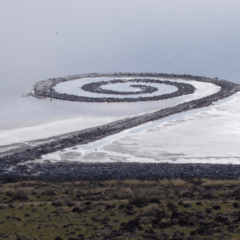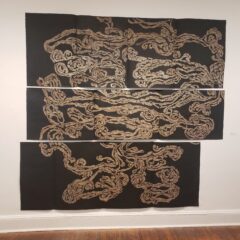About 60 people were in the American Philosophical Society Museum’s Ben Franklin auditorium on a hot, blustery September day for a lecture by Fritz Haeg, creator of Animal Estates and Edible Estates. Haeg is an artist, architect, designer and avid amateur gardener, and his projects involve communities — of people growing their own food on their own front yards; or of animals, where he creates housing for wild animals in cities where once there were many and now there are few or none (eg New York).
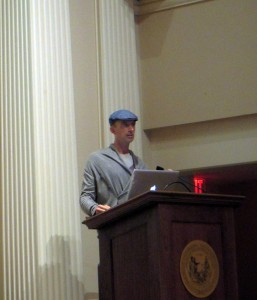
The lecture was co-sponsored by the APS Museum and the Philadelphia Horticulture Society (PHS) perfect sponsors for Haeg’s projects which involve history, animals, plants and remembering the past and to create a better, sustainable future.
You say what does that have to do with art? Well, in the new embrace of action as art and community-building as art, Haeg is a hero and champion, and he does much of his showing and telling in major art institutions, like the Whitney Museum (the 2008 Biennial); the Tate Modern in London, San Francisco MoMA and the ICA right here, where he was a part of 2006’s Locally Localized Gravity, an exhibit that celebrated art and community. The guy is so busy he’s hardly ever home. He bemoaned the fact that he can’t really spend time in his own garden because he’s so busy helping people start theirs. See his Wikidiary for his itinerary.
Haeg says he starts with cities because there’s no real wilderness left. As an architect he’s not interested in building a building. “I’m more interested in looking at what we have and how to occupy the land in creative and revolutionary ways.”
Edible Estates started in 2005
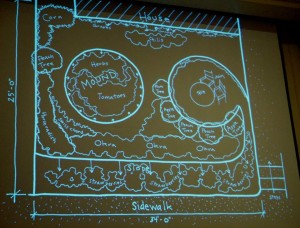
Edible Estates grew out of his massive obsession with gardening. “When I’m gardening it’s the only time in my life I’m where I am doing what I should be doing. I’m an artist trained as an architect and an amateur gardener. I want to make gardens anyone can make. The goal is to make prototype gardens around the country…so people can “grow food where they live (and do it) publicly (ie on the front lawn, not the back yard).”
Here’s how it works. Haeg gets invited to do a project; and he seeks out a family to work with and they design a garden for the front yard. He’s careful in the selection of the family and selects something in a sedate middle class neighborhood with manicured lawns. He talked about how the neighbors would be skeptical. And how the children were always the most excited and the first to want to help. He’s done these projects all over the world, starting in Salinas, KS. He’s done them in Baltimore, New York, Lakewood, CA, Austin, TX, London, Istanbul and in 2012 will be making a garden in Budapest.
“The idea of the American home is based on old English estates — a house dominating the land around it, isolated from the neighbors. What do people in America eat? We’re isolated from our food. It’s grown in irrigated deserts in the southwest. It’s a monoculture–people live one place; food is grown another.
“It’s not an advocacy project saying everybody has to do this. But we can all learn…It’s easy to think of this project as Romantic, but it’s not.” And he mentions Rome, in 64 AD had a million people to feed and he city couldn’t feed itself and it kept expanding….and, well, we all know what happened to Rome.
Animal Estates started 2008
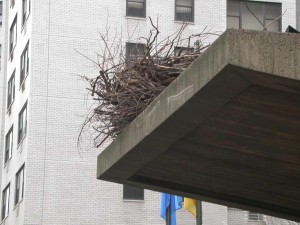
Haeg made his first animal houses for the Whitney Biennial in 2008. The questions for him are: Do we want animals in the city? If so, which ones? He researched the city to see what animals would have been at 75th and Madison (the Whitney’s location) some 400 years ago that aren’t here now. The answer: brown bat, eagle, bobcat, beaver, purple martin. He then made model homes for these animals and the hope was the animals would use them and come back. The hope was also to educate people about our animal and wilderness past, so there were activities and lectures about animals, and performances based on animal behaviors. Haeg says that the animals are his clients and he’s designing for animals. He’s continued to do Animal Estates after the Whitney Biennial. Most recently, with Arup Assoc. in London (architects, who did the Beijing Olympics). In the corporate lobby, he made a reception desk for animals that mirrored the reception desk for humans.
Haeg is a visionary and yes, these projects are Romantic. But they’re also dead serious, positing a way forward through education and a return to simplicity that’s very appealing.




